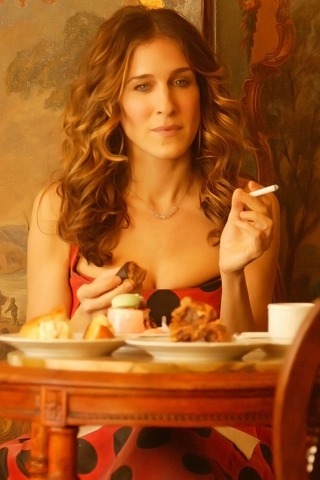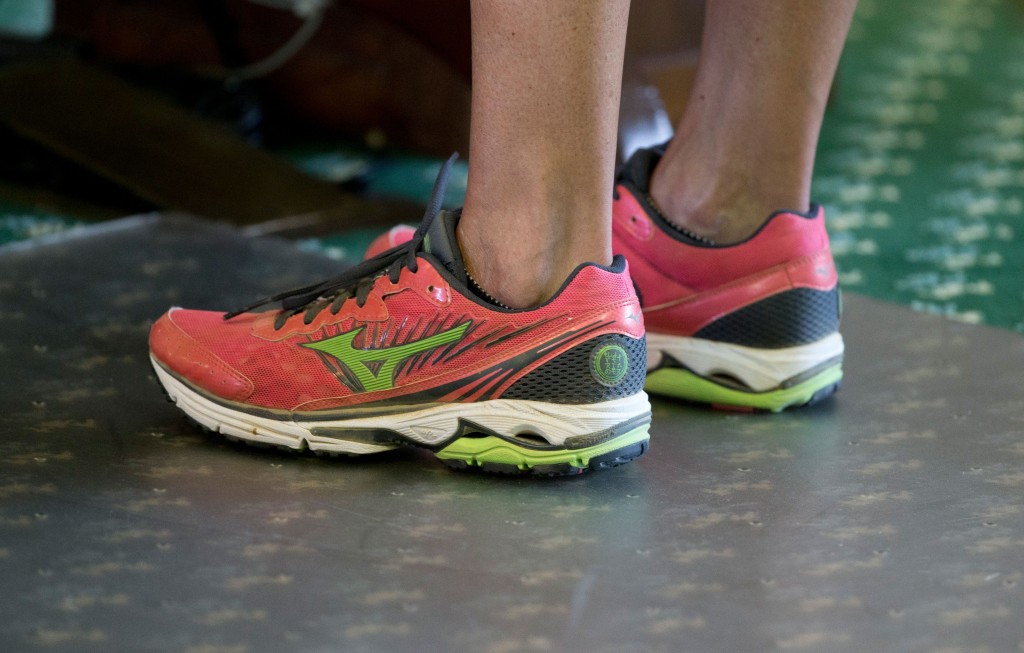 “When I first moved to New York and I was totally broke, sometimes I bought Vogue instead of dinner. I found it fed me more.”
“When I first moved to New York and I was totally broke, sometimes I bought Vogue instead of dinner. I found it fed me more.”
****
Growing up, my mother and I would bond over Sex and The City and in the back of my Chemistry and Physics textbooks, I liked to doodle little dresses and shoes. If all of my aspirations to study science and law went awry, I planned to characteristically move to New York and become the “starving” journalist who would justify spending bucketloads of money on Manolos before paying my rent. Naturally, coming to live in the City for a couple months, I was excited to see how crazily (and glamorously) people put themselves together. But, these thoughts were always categorized separately, distinct from my academic interests—my guilty pleasure and thirst that would be quenched through blogs and Instagram. Never did I think that such interests would intersect with my identity as a scholar and as a feminist.
In a recent office discussion, one of my supervisors brought up the way in which female politicians are scrutinized more for their sense in fashion than in their policy decisions. I wasn’t sure about the latter half of that clause, but I remembered many politicians featured in Vogue. More accurately, in fourteen administrations, only one first lady hasn’t been featured in the pages of the magazine. Condoleeza Rice, Hillary Clinton and Nikki Haley graced the pages in haute couture. Evidently, I hadn’t thought much of it. What did it mean for Vogue editors to compliment these women for their classy choice in suits and accessories? One of my co-workers was furious—”Everytime, girls go out and really do something. What happens? Their shoes make it to the front page of the Times.”
Look for yourself. Google (or Bing) “Hillary Clinton” and within first couple pages of the search, you’ll find major news outlets covering the evolution of pantsuits. And a recent example— badass Senator Wendy Davis landed on national headlines following an 11-hour filibuster that helped defeat a controversial abortion bill aimed at severely cutting access to abortion services across Texas. The morning after the feat, my Instagram feed was filled with comments about her choice in wearing pink Mizuno Waves. I tried talking about Davis to a friend that evening and all I got out of him was, “I wonder if those kickass sneaks come in men’s sizes.” And that’s all I could churn out of him that evening. (On a side note: it must be a week of sneakers. Apparently, Roger Federer’s scandalous orange-soled Nike sneaks are sold out in stores everywhere. But, I digress…) If that’s what some got away from Davis’ courage that day, we live in a shitty place.
Writing yet again another blog entry about female politicians and their style probably does not help change the status quo. But, I hope to document this change of thought and the need to judge politicians as just that—politicians. Yes, a female politician brings to the table knowledge and experience that are rare among the male folk. And those qualities in addition to accomplishments made should be what makes it to the front page of the Washington Post. In the need to feminize those women leading the pack, both men and women depreciate the value and ability to enact positive change by confining these female leaders to their stereotypical roles. (My supervisor suggested that I write a blog targeting the uncleanliness and antiquated sense of taste prevalent in the male politicians atop Capitol Hill, but that probably won’t help solve anything. And besides, I’ll keep jeering within the confines of my own home).


From my observations, journalists (and I use the word LIGHTLY) tend to emphasize clothes, fashion, “how good she looks” when covering female news makers more than men. I could bristle at this all day. But what if we take a different perspective on it. For example, I believe and experience that beauty (in the BROADEST sense of the word, not in terms of women’s beauty) is an essential part of humanity. Art. Color. Emotion. These create containers for facts, and give us the context of experience. Thus Wendy Davis’s sneakers become an icon for abortion rights, rather than a fashion statement. Wearing them is a sign of solidarity. And I’d rather wear pink sneakers than a stinky man’s jacket, eh?
How do we OWN and experience the gender biases so that we create power from and with them, rather than let them define us? And at the same time, how do we not fall trap to the “expectations of (fashion) beauty”? What do you do?
Yes, I agree, there has to be a way to turn this around . . . maybe we are too focused on criticizing the media for the focus on fashion or style and we need to remember that no press is bad press . . .women on the front page, women making history, women in the discussion of politics and legislative battles. Because while the article may start with the hairstyle, it almost always contains something of greater substance and my hope is that the substance starts to catch up with and then overtake the style. It’s a marathon not a sprint.
Nancy: I absolutely agree with you in that beauty is an essential part of humanity. It provides a unique lens through which to view certain topics. Reflecting back, I do believe that Sen. Wendy Davis’ sneakers provided a gateway through which many people who normally do not engage in politics were able to take a glimpse. And if that’s how we can widen the scope of the “pro-choice” discussion along with other crucial issues, I am all for it. But, it’s important that these people are inclined to then look at these politicians for the issues they support and don’t support. And that’s why I think journalists are so very important in leading the discussion- they are not spearheading the issues but serve as important guides and supervisors in the discussions that follow.